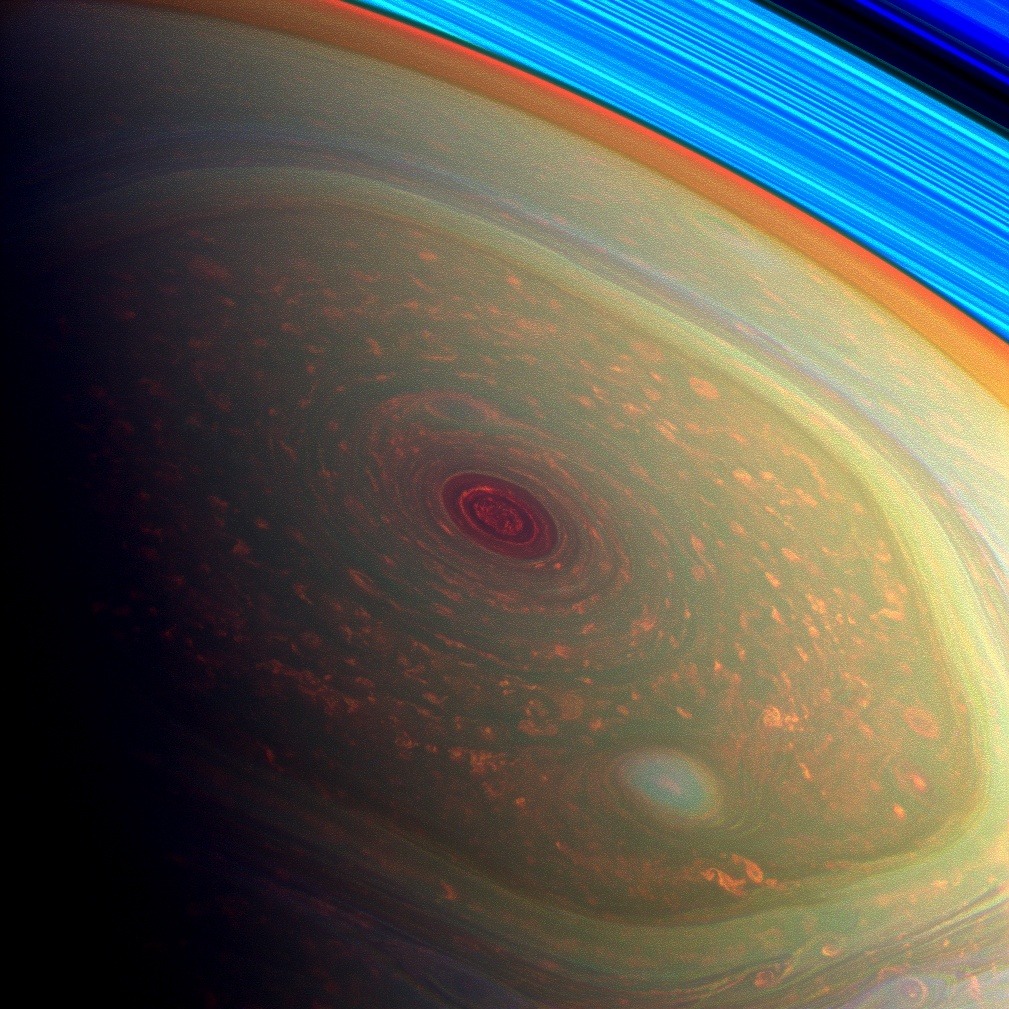I would never have imagined that a 100mm refractor would be such great deep-sky telescope. I've always been a fan of reflectors, because they offer so much more light for the money than refractors do. This is my first refractor! In the past 30+ years, I've owned at least eight reflectors (including a few I made myself), and still own two big ones: a 12" Schmidt-Cassegrain design that uses a corrector plate across the front opening of the tube to correct the imperfect mirror, and a 17" Newtonian reflector on a simple Dobsonian mount (the cheapest way to get the most light - the 'scope in my userpic). For the price of that 100mm (about 4" diameter lens) - if I had bought it new (I got it nearly new from eBay for a steal) - I could have bought a reflector with many times the light-gathering power. Here's what it looks like:

So why buy such a thing? For one, I already have two wonderful reflectors. But they're both pretty large to lug around (70 and 90+ pounds). I also knew (academically) that, compared to a good refractor, the
quality of the image in a reflector suffers because the secondary mirror (and holder) get in the way of the incoming light, and at high powers produce issues at the edge of the field (except in very expensive, multi-optic hybrid designs). On the other hand, a cheap refractor's image only suffers when it disperses the light passing through its lens into various color components, because those different wavelengths of light usually separate, like this:

It turns out that the refractor I bought is pretty kick-ass. The optical design of my 'scope is an "
apochromatic ED." Unlike an low-cost but decent "achromatic" refractor, an apo converges all the frequencies of light at the same focal point (or close enough for the human eye). Less expensive "achromatic" telescopes do not use the best glass, failing to converge blue-through-violet light very well, so that range of light appears as a fuzzy halo around the object you are viewing (and usually suffering in sharpness, as well). This is less of an issue with dim objects like globular clusters, nebulae, or galaxies, but it becomes a nuisance with brighter objects like the Moon, stars, and planets. Also, the colors dispersed are lost information, subtracted from the resolution of the object, thus reducing the image quality, thus defeating the entire point of a refractor over a reflector.
To combat these issues, an
apochromatic objective uses multiple glass lenses mated together to converge the various frequencies of light, thus managing the refractive dispersion through the elements. Sometimes apos use rare materials (like fluorite or other low-dispersion glass) in the lens composition. As you might imagine, these are expensive propositions - simply adding a second or third lens doubles or triples the cost, and if the glass used costs, say, 10x as much... well, you get the idea. The very best, observatory-quality refractors use a combination of both strategies, and the price for such an instrument is astronomical (ba-da-boom, tsch!).
Mine achieves apochromatic quality by using two lenses, one of which is made of extra-low dispersion (hence the "ED") FPL-53 glass (made only in Japan) to provide super-sharp images with no false color. Mine isn't the top of the line, but it's pretty close. Sure, if it used fluorite instead of FPL-53, it might be slightly better. Or if both lenses were that kind of glass, or if it were a triplet (three lenses). But telescopes like that are MUCH more expensive, costing around $3000 - I got mine, complete with a dual-drive equatorial mount, for about $600. But why? Objects in my 'scope are free of false color (chromatic aberration), sharp, and don't lose any light to dispersion, either.
I've used this 'scope for a couple of years now, mostly because it's so convenient to drag in and out of the house, but never knew all it was capable of. It required a team effort. The real eye-opener for me was how much difference a great eyepiece makes. I've always used decent eyepieces, but these new Explore Scientific eyepieces are frakking amazing! Here's my new case for my 2" eyepieces (the new ones are those with yellow-green spots on the side):

HOLY WOW! The widest field-of-view eyepiece I've ever owned is my William Optics Swan 33mm (it's the one in the photo with the orange bottom cap). It offers 72° apparent field of view (how wide an angle the view in the eyepiece looks to you, the observer), which I thought was pretty amazing. It's still my lowest-power eyepiece (magnification comes from dividing telescope focal length by eyepiece focal length - my 100mm has a focal ratio of f/9, meaning 900mm focal length), offering up a magnification of 27x in this 'scope, with a true field of 2.7° of the sky (about 5 times as wide as the full Moon). Pretty nice, I thought! Sure, the quality of the image at the edge is imperfect, and the sharpness could be better, but it was as nice as I ever used.
Enter the 30mm Explore Scientific 82° wide-field eyepiece of joy.
I started last night's observing session with the Great Orion Nebula, directly overhead in Kansas at around 11pm. The first eyepiece I dropped into the focuser was the most massive once I've ever used, a 30mm with 82° (apparent) field of view. The huge swath of sky it provided was simply astounding - especially when it caught a meteor streaking across the belt of Orion! I didn't bring any astrophotography gear (I was just in my front yard, after all), but here's a nice drawing of about how it looks to the naked eye in a telescope of about this light-gathering power:

This puppy is about the size of my fist and weighs 2.2 pounds (!). Its field of view is so ultra-wide that I had to move my head around to get the full view, making the experience feel like I was looking out through a spaceship's porthole rather than through a telescope eyepiece. Even though the magnification is greater (30x), its true field was wider than with the 33mm! It also has a very large 6.7mm exit-pupil(how wide the cone of light coming through is), which is even larger than some eyes can dilate. It's difficult to explain just how amazingly immersive such a view is until you try it.
Other cool features of this eyepiece: It's O-ring sealing and argon-purged. This makes it completely waterproof, prevents internal fogging, keeps the interior dust- and fungus-free, and makes it easier to clean (no risk of cleaning solution getting trapped inside). It'll stay clear for a lifetime - guaranteed. Its 21mm of eye relief provides unvignetted (no darkening around the edge) views a full inch beyond the lens closest to your eye - this is not only great in general, but makes it easier for eyeglass wearers to observe without removing their glasses. Of course, doing so would mean missing out on a lot of the potential field of view. Its six-element optical design uses low dispersion and high-refractive-index lenses (same benefits as in a telescope's objective) in four groups. All the lens surfaces are fully multi-coated as well, and the lens edges are blackened to improve contrast. All of this adds up to the highest contrast, highest resolution, sharpest resolution, and flattest ultra-wide field of view I've ever seen.
LOVE
Then I moved to the next-smaller Explore Scientific eyepiece, a 24mm (also 82° FOV), which provided 38x and a true field of view of 2.2°, so wide that even the hugely wide Orion Nebula only took up the center of the image. AMAZING! I spent some time with this eyepiece before moving to the next-higher-magnification unit....
Enter the Explore Scientific 14mm
100° apparent-FOV eyepiece. This puppy is just about as large as the longer-focal-length unit (almost 2 pounds), though with a narrower and longer barrel to accommodate
nine optical elements of rare-earth glass. Though 100 doesn't seem that much larger than 82, those extra 18° provide nearly 50&percent; wider FOV. So the 64x magnification this one provides
still offered up nearly 1.6° of true field - that's
three times as wide as the full Moon! This is truly astounding to someone whose prior experience is mostly having used what I thought was a nice Plossl 24mm with 52° FOV - that's less true FOV at much lower power.
So, I asked myself, what will the highest-magnification Explore Scientific unit offer? It has 9mm of focal length, providing 100x... but because of the huge field of view, this high power was still
a full degree - twice as wide as the full Moon! I had no idea that a high-power eyepiece could be so comfortable to use, or provide such a "spacewalk" sensation, or offer up such crisp, high-resolution to-the-edge views. Man, now I wish I'd ordered the mega-power 5.5mm that was also on mega-sale! It would have provided 164x while still offering a FOV
slightly wider than the full Moon! *boggles mind*
At the end of the night (pretty late by now - after 1am, I'm afraid), I noticed that Jupiter was just starting to peek out from the trees, so I thought why not? Sure, I would be looking a lot of humid atmosphere, over the neighbor's house, and through branches, but it's my fave planet. My apo plus 9mm SOOPER EYEPIECE did not let me down. Four Galilean moons and stormy Jupiter all served up as nice as through a cheap eyepiece looking directly overhead. Just wow.
Oh, and surprise! All these eyepieces turn out to be parfocal, meaning you don't need to do significant re-focusing when shifting from one to the next. That's a major bonus when swapping eyepieces, especially when moving to high magnifications (which also magnify your bumping the 'scope whenever you touch it), where you can lose an object and have to start over finding it at a lower power.
And the best part? We live in an age when you can get incredible eyepieces like this during online, pre-xmas sales for just a little more than the price of a so-so eyepiece (I bought all four for about the retail price of just the 14mm.
HOORAY SCIENCE

Chris








































































